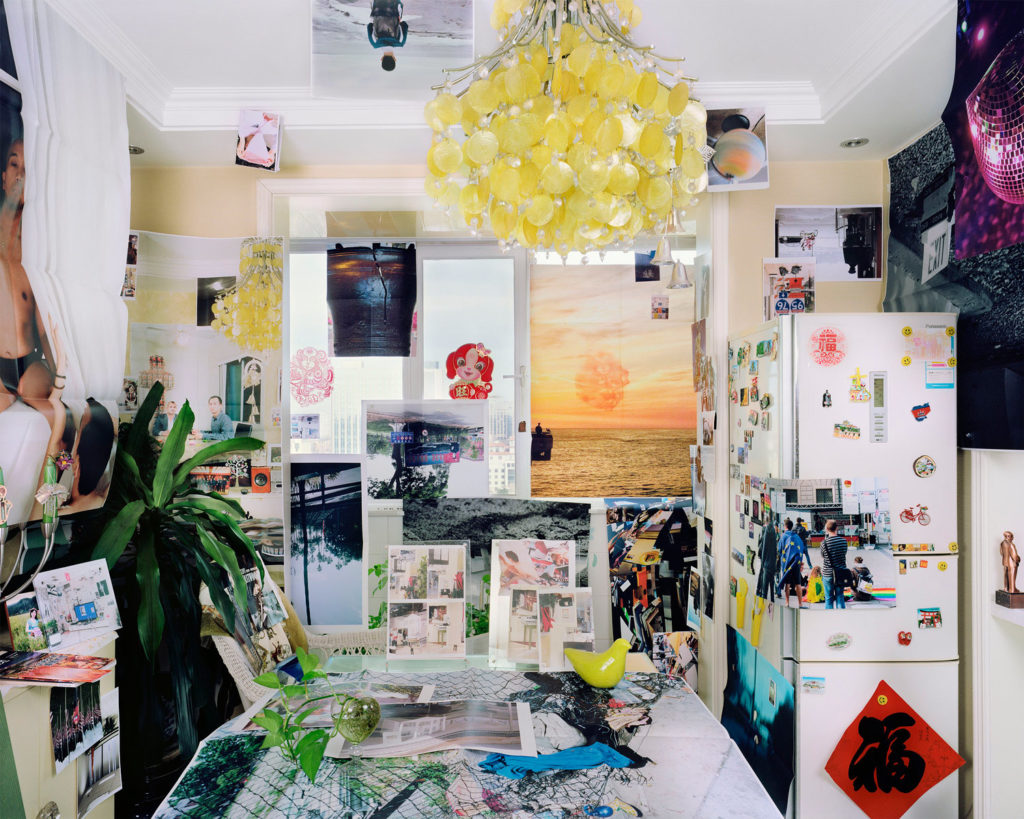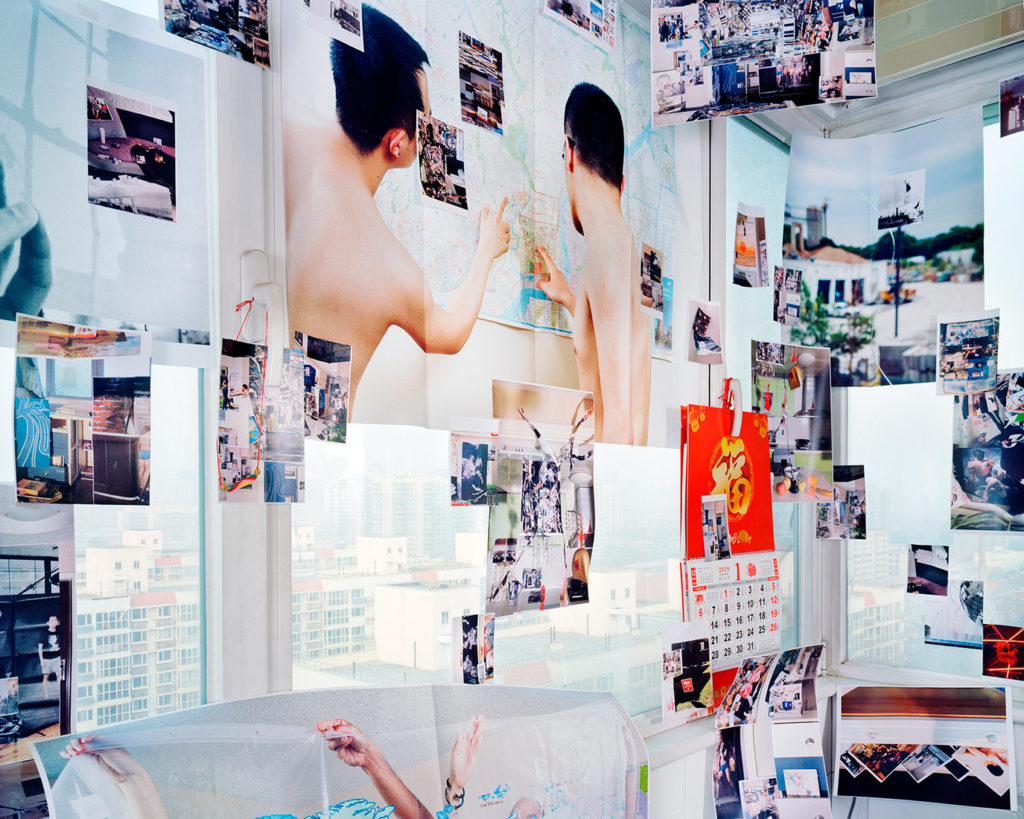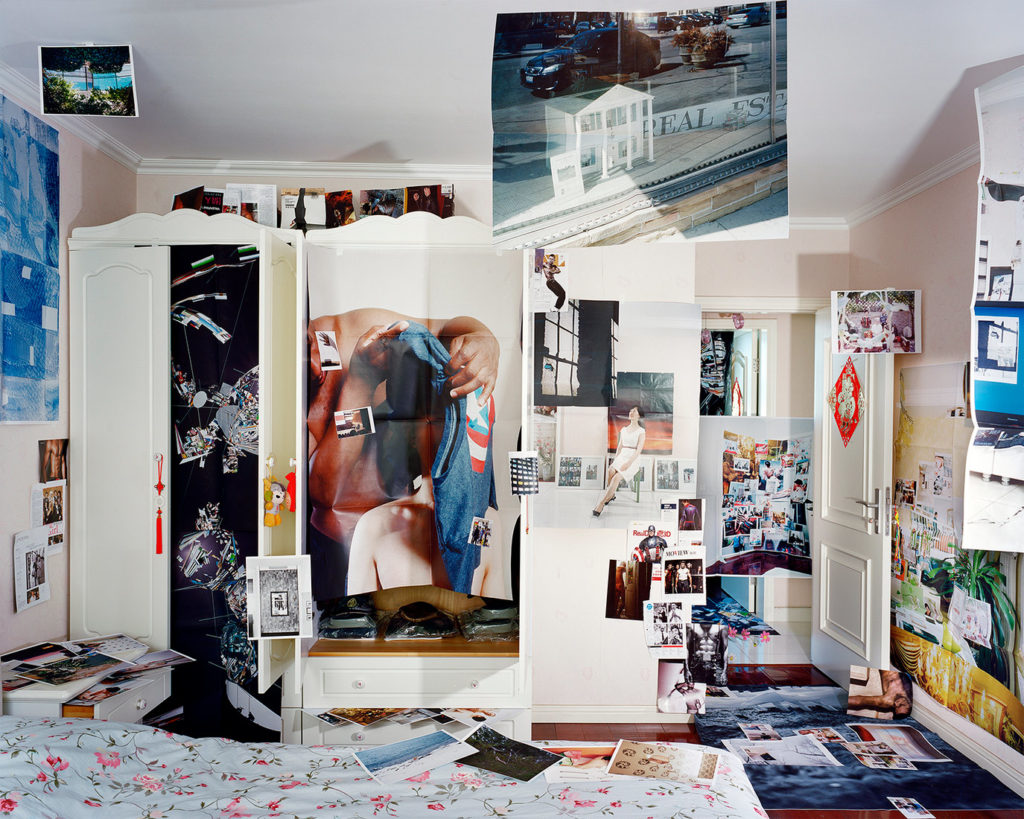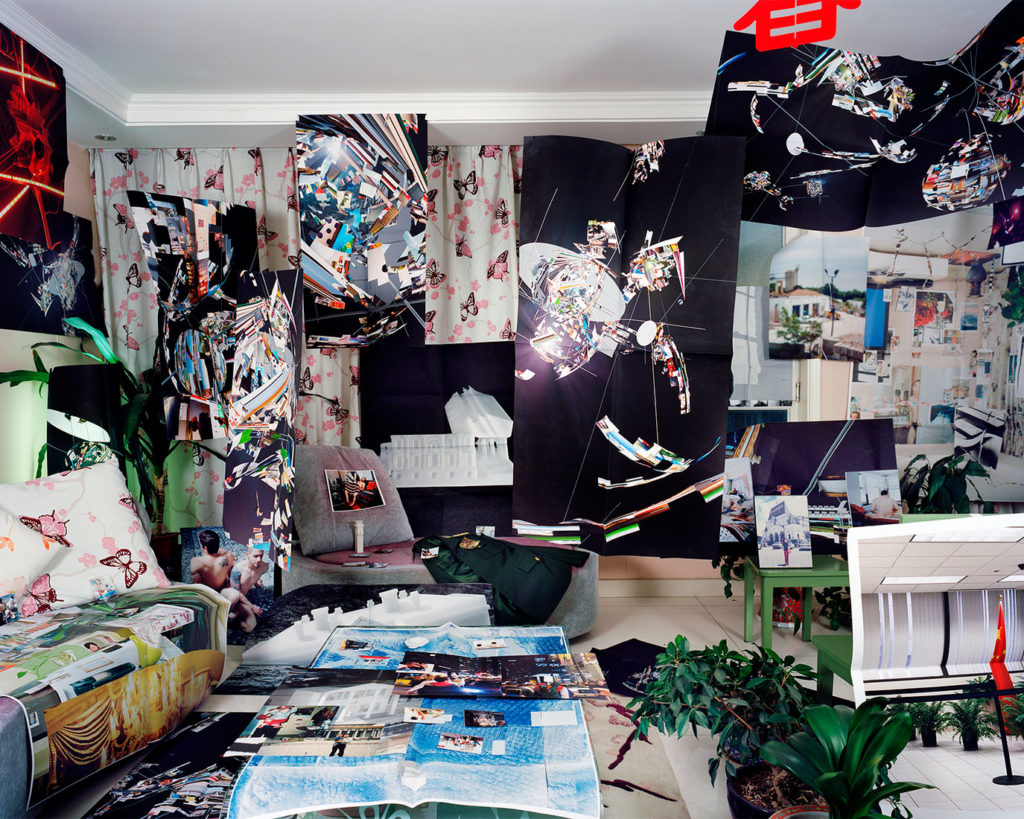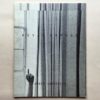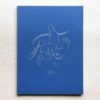徐冠宇 Guanyu Xu (b.1993 Beijing) is an artist currently based in Chicago, USA. His work has won several prestigious awards and has been exhibited internationally and is part of public and private collections.
Xu’s personal history is key to understand many elements of his artistic practice. In an interview fo LensCulture, Xu explains: “I was born and raised in a conservative family in Beijing, China, where expressions of overt non-heteronormative behavior were forbidden. My father is a military officer and my mother is a civil servant. Both of them still do not know I’m gay. Growing up in China with limited representation of LGBTQ people, I turned my attention to Western films and fashion that were dominated by representations of white masculine men. As a teenager, my exposure to American culture through films and TV shows planted an American Dream within me. Thus, the juxtaposition of torn pages from film and fashion magazines that attracted me during my teenage years and staged self-portraits with other gay men in the US creates a self-reflective relationship between the image production of power and my investigation of the intersectionality of race and sexuality.”
Temporarily Censored Home is his most acclaimed work up to now. This project was made when Xu went back on a trip to China and took with him a suitcase full of his photographs. There, living in his parent’s home, he waited for them to leave to work and during the time they were out, he turned the place into a gigantic art installation displaying images all over the place and then taking pictures of those ephemeral installations before dismantling them.
About this, Xu has said: “My teenage home is a place where my identity is formed. My mother’s floral interior design and my father’s highly organized surroundings construct a middle-class heterosexual space. I openly collected film and fashion magazines in this space. But only I knew that I secretly understood my sexuality through them. This secrecy is exactly like my project: a secrecy that happens at home. I always concealed my real artwork from my family in these years. And this time, too, I have to hide it again: Each installation had to be finished and taken down before my parents come back home from work. My photographs of multiple homosexual spaces in the US temporarily queered my teenage home, confronting the normativity and power of the phenomenology of object and architecture.”

Sexuality and identity are important parts of Xu’s work. But it’s not only that. After moving to the US he had to confront the reality of the cultural differences and experience how the nationalism operates in both countries: “Growing up in China, my education was always embedded with deep nationalistic ideology. The comparison of US imperialist nationalist policies and China’s patriarchal nationalist governance makes me realize the simultaneous operations of nationalism and imperialism as a means of centralizing power. These male narratives of power connect and dominate individual and institution, private and public, personal and global. Through using constellations of photographs, my installations also imply constant movement in different spaces: the detour sign in Philadelphia, the horizon of Pacific Ocean in Los Angeles, a protest against an alt-right party in Munich, a view of soldier’s back in Beijing, an abandoned display window with American flags in San Francisco, the march in Chicago after Donald Trump’s election, anti-Brexit posters in Brussels and so on. In my intervention, these parallel but converging spaces and times point to the relationship between individual freedom and global political governance. By providing viewers with portals of migration, I aim to dissolve the borders of opposition.”
We approached Xu to find more about his work. Here are some questions he was kind enough to answer us 🙂
TWS –An important part of your work creates meaning through juxtaposition and recontextualisation. Each picture you place is resignified by the other elements around. What’s the role of photography in your practice? And how it’s complemented and enhanced by the performative side of the installations?
I was trained as a photographer, but because of my study in a fine art school, my practice becomes more fluid. Influenced by the production of ideology in American visual culture and a conservative familial upbringing in China, my practice extends from examining the production of power in photography to the question of personal freedom and its relationship to political regimes. My project Temporarily Censored Home is in a way is constructed specifically for the camera. It is crucial for me to remind the viewer that the images are “made.”
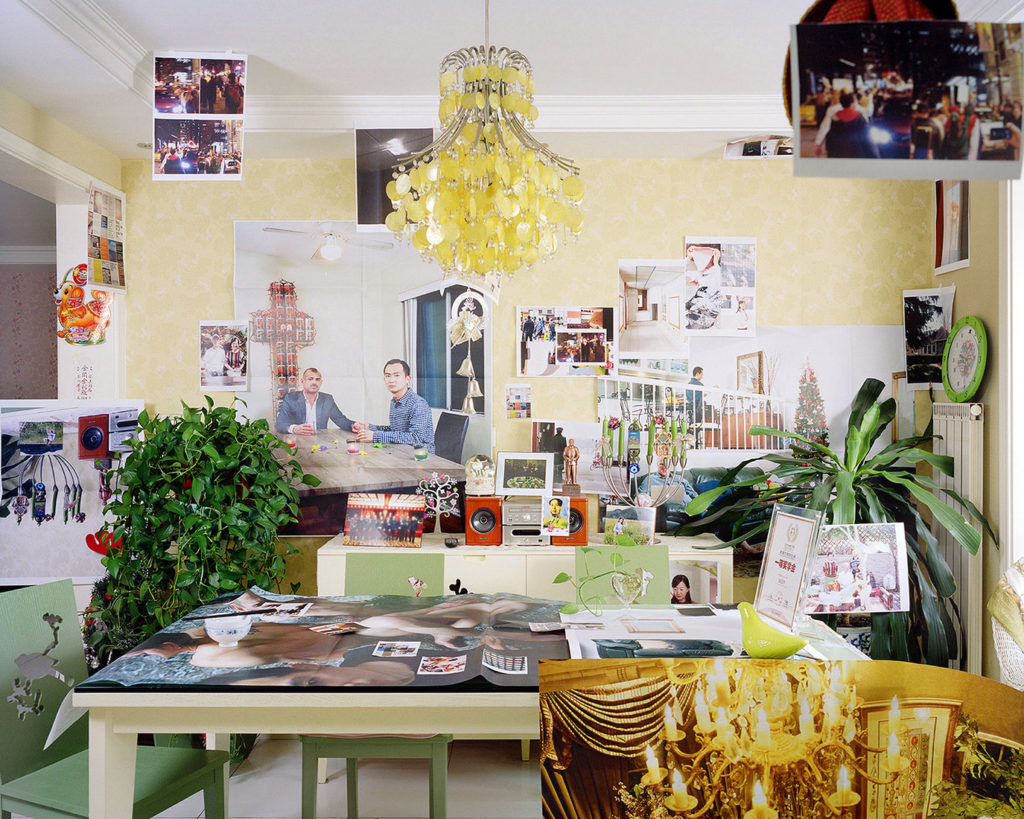
TWS –Occupation and the reclamation of a space has a central place is your Temporarily Censored Home series. What does this occupation means to you?
It was a process to let my body and my work to take up the space and to own the space. Because it was not a place that allowed my freedom. In a way, I poured my frustrations out there. This occupation also provides a discussion on the physicality of photography and how perception has weight on our desire, body, and life. Image and space formulate our life.
TWS –There are contradictory feelings in this series: the relief of finally being able to be yourself at the place where you grew up, but also the reality of this being just a temporal situation that should be kept as a secret. How does this mixed feelings feed, determine and inform your work? How does the tight timeframe shapes the outcome?
I am always interested in contradiction. Photography is a contradiction. I guess the feeling of urgency, powerlessness, and precariousness makes the work more real. The tight timeframe ties back to the idea of performativity and interestingly also goes back to photography. How photography can capture the fleeting existence and how the idea of the short amount of exposure time represents the ephemeral freedom I could have in my home.

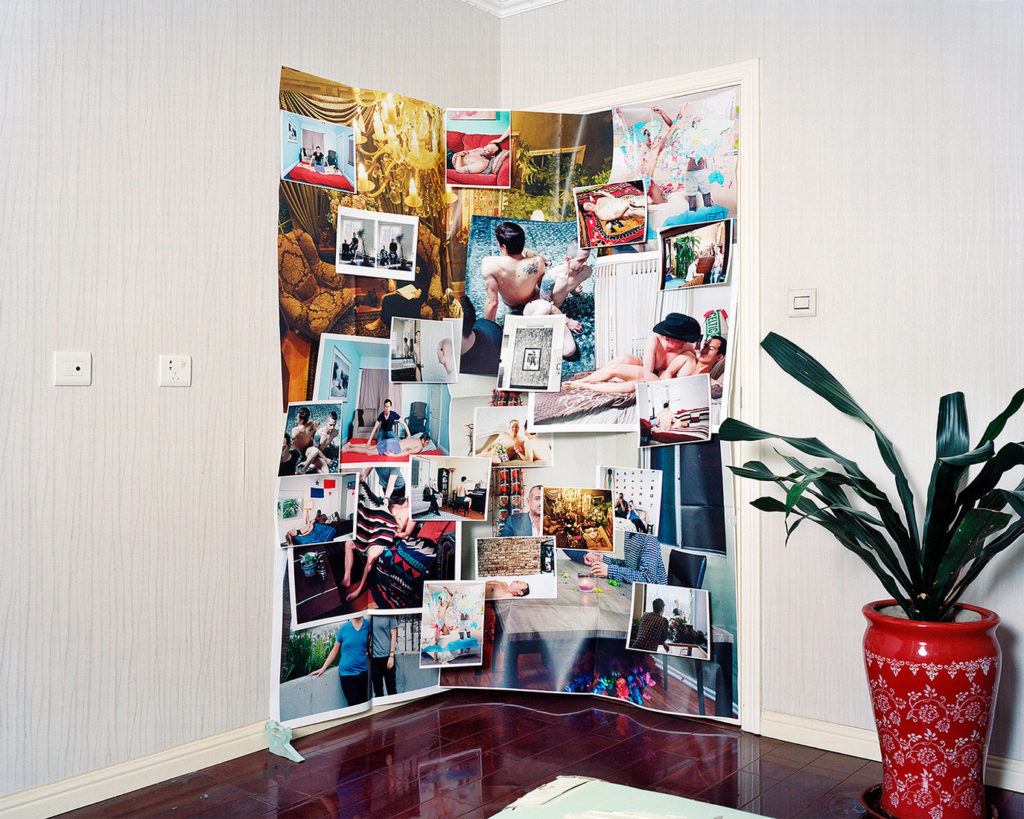
TWS –There’s a teenage spirit (in it’s best and most positive sense) in this series. From the intervention of walls in rooms with poster and personal images to the idea of secrecy and doing wild things while parents are out. How do you feel about this? Was this project fed by any remains of your teenage angst?
I think to me, being a “serious” artist, I have to constantly channel both rational and emotional aspects of my brain. Overall, I’m a more analytical person, but I realize more and more it is important to feel and to express.
TWS –The idea of journey is also present in many ways in your work. A journey that’s physical (moving from China to the USA) but also an inner journey growing up and dealing with your sexuality in different contexts. Is your work a way of documenting this quest and opening a dialogue about the issues that worry you?
I like that you say there is an inner journey. Lots of people think photography is a window to the world. So I thought yes, I want to present my constant journey in my work. Through using constellations of photographs, my installations also imply constant movement in different spaces. They open up the borders of personal space, nation, and global migration. Bringing the viewer into my home in Beijing is one thing, but providing the travel to different spaces and times is also crucial.
TWS –The idea of documenting and exhibiting your life has the potentiality of making changes in this journey. Have you every thought that your parents might some day find you out about your work and discover all what you’ve been hiding and exhibiting publicly at the same time?
They found out I had an exhibition in New York. But they still don’t know what exactly is the project and what exactly are in those photographs. I am worried. This past summer I was featured by a Chinese media, which had at least over 100k views within days. But I guess because of the info bubble we live in, they still haven’t found out about it.


TWS –Your installations add depth and three dimensions to photography, allowing to organise the information in layers and allowing the viewer to read this scenes and decode its messages. How do you design this sets? Is there a thorough planning? or the installation is part of the performance and improvisation has an important role in your work in this phase?
I did plan and picture in my head to a degree. But most of the time I have to figure it out while I am physically arranging there. It is important for me to feel the urgency and anxiety as part of the process. Sometimes I also installed and then captured the draft by my phone.
TWS –Have you even thought of your work as some kind of collage? Does collage have informed your work somehow?
It is collage. A spatial collage maybe? I love collage and installation artists. You could see the influence of Thomas Hirschhorn, Sarah Sze, and Wolfgang Tillmans.
TWS –And, finally, this is the only question we as to all artists interviewed: which is your own and personal definition of collage?
Collage is the ability to see multiple things/perspectives/worlds at the same time. It is the art of complexity and it is connected to how we experience the world.
Find more about Guanyu Xu on his website and instagram

